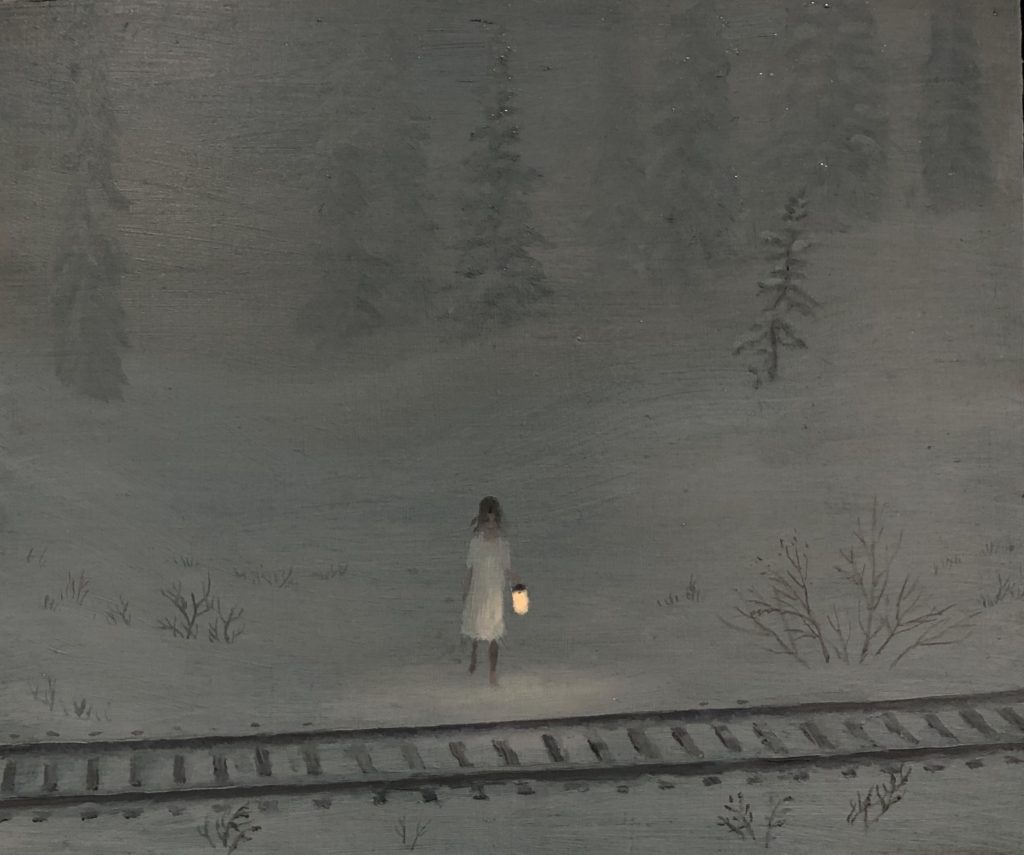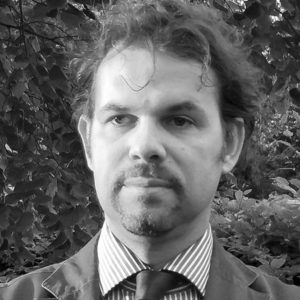July 28th, 2019 by dave dorsey

Part of the extended family in my father’s hospital room a week ago.
And therefore I looked down into the great pity of a person’s life on this earth. I don’t mean that we all end up dead, that’s not the great pity. I mean that he couldn’t tell me what he was dreaming, and I couldn’t tell him what was real.”
Denis Johnson
When I got to the hospital to tune my father’s institutional television into the last round of the British Open on NBC a week ago, we had an unusually lucid and direct conversation about whether he should just go home and let things run their course, rather than be transported to a nursing home tomorrow, potentially for weeks of rehabilitation and healing. It was both honest, but also hyperbolic—a way of simply telling me that he felt completely defeated and cared only about going home.
“So we’re going to rehab after this to keep me alive?” he asked.
“Yes, to get you better.”
“Then why can’t I just go home and die?”
“I understand the question, Dad.”
“I’ve had a good life.”
“We want you around. We want to get you healed up and back to the way you were before you got to the hospital,” I said. “Get better for us. Do it for us. We miss you.”
At that, he started to cry, and I went over and put my arm around his head, the only way I can give him a hug anymore, since he’s usually seated—this time he was still in the surgical bed adjusted into an armchair position. I told him no one can force him to go to the nursing home, and it’s entirely his choice to have us bring him home or go into rehab where he was accepted for it. He seemed to find this reassuring, but I’m not sure he believed that we would listen to him. He had the power to choose his future, but he was willing to choose rehab. (Which he did and where he is now getting better very slowly but with more emotional balance.) Emotionally, at 92, suffering from significant cognitive impairment, unable to walk as a result of stenosis and vulnerable to pressure sores, he has often felt left out, disregarded in conversations, hovering at the periphery of whatever is happening around him. This has been the case for the past couple years. It’s intensely frustrating, an invitation to despair, for a former CEO, a man who ran a total of four different newspapers at various points in his career, who was honored with an award from President Reagan in the Rose Garden for his work in the volunteer sector as head of the Gannett Foundation, when that organization was still operating as a force for change in the communities served by Gannett newspapers. He was a pen pal briefly with Barbara Bush, and was conversationally acquainted with three presidents in his various roles at Gannett, Independent Sector, and the American Council for the Arts: Reagan, Jimmy Carter and even Nixon, many years ago, after he joined Gannett. All of that feels like a dream now, the life of a different person. Now, like a little boy with mournful eyes, he waits patiently as two women he met only in the past week come into his hospital room to lift him up and change his clothes, get him into a reclining chair, adjusting his catheter, clean his wound with a bleach solution. The pressure sore after debriding was the size of a shallow cupholder, looking as if it had been created by pressing a round cookie cutter into his bottom. It will take months to close up and will require debriding by a specialist. He feels nearly helpless and totally at the mercy of everyone and everything, and this would be some fresh hell for anyone, let alone someone who controlled organizations for a living. Now his life is subject to the prerogative of diligent people he hardly knows. His decline began when he turned 80 and began to feel the first indications of stenosis—funny bone-like reverberations in his legs as a result of pressure on the sciatic nerves branching from his spine. For years, he slowly lost strength and sensation in his legs, with operations that arrested the progress of the neuropathy and opened up circulation to his feet in order to save them from amputation. It has been a war against the disintegration of his body and brain, and despite everything the father we know and love is still in there, dwelling behind his eyes, joking, flirting with our mother, when he is at his best and most rested. Without warning, his wit can reach out to use through those shining eyes with a few words.
As the young technician got him into the device that would transfer him to the reclining chair she said, “We just need to change you.” Meaning his clothing. He glanced at me and said, “Change me into what?”
Continue reading ‘Why I’m not painting’
July 7th, 2019 by dave dorsey

A Late Arrival, Aron Weisenfeld, oil on panel.
At the risk of coming across as a human billboard for Arcadia Gallery, I have to note with pleasure a show that has already come down—with the same inadvertently useless timing of my last post on the gallery. Maybe this helps offset the impression that I’m standing on the street directing passersby through the front door, not that I would be ashamed to do that. On my last trip to the West Coast I was in California too early to see Matthew Cornell’s tour de force of small works, Roadside Attractions—(Manifest Gallery could do a solo installation of this same show entitled Magnitude 7, except that Cornell usually sells out whatever he shows). I arrived in time, though, to marvel at Aron Wiesenfeld’s Natural Selection, a haunting series of images that have a patina of somber fantasy, but are surprisingly vivid depictions of gentle, and sometimes intensely beautiful, alienation. His paintings are mostly centered around a young waif whose occasionally elongated figure reminds me faintly of Giacometti’s gaunt sentinels. Wiesenfeld creates scenes of almost hermetic silence, inwardness and isolation—all surrounding what look to be adolescent figures. Yet these qualities aren’t nightmarish, but are closer to tranquil waking dreams set in natural surroundings or sparsely populated urban landscapes. Illuminated signs beckon from a rural highway across an empty field or the glow of an Apple display logo shines like a candle from the lap of a teen sitting under a stone archway. His young, reflective figures seem slightly lost or just willfully unmoored from any recognizable purpose other than to be aware of their own superfluous presence in a world too busy or remote to notice them. (A mood known to most people, at any age, no?) This comes across as a good thing for us, at least—these figures become conduits for the viewer to variously absorb the intense beauty of the world immersing these idle avatars.
What’s so gripping about the work is how these almost stylized images awaken powerful, haunted feelings of familiar moods inspired by subtle qualities of light and even temperature that echo back through a viewer’s experience of countless winters or autumns, along highways, in woods. It’s a twilight world, alternating between wide, almost desolate open spaces (fringed with signs of random commerce) or protective havens for Wiesenfeld’s subjects: a reflecting pool, a tunnel, a crawl space or crumbling wall, and a beckoning pit. The images are like moments from disenchanted fairy tales, yet they aren’t depressing. They convey the not entirely unpleasant sadness one courts by listening to certain music in mid-teens, or twenties (or thirties for that matter)—when the joy of heartache can be a way of feeling most alive. Three paintings in the show have an almost mythical simplicity and resonance. His largest canvas, The Bridge, shows his waif standing on an old, improvised footbridge gazing off to the horizon dotted with lights from scattered commerce and low-rent homes clustering along a state highway. (It’s the sort of development that zoning boards relegate to places where those on the board wouldn’t build their homes, but in these paintings, there’s poetry in the yawning distance between the ruminating figure in the foreground and the winking points of light that shine at the far edge of the field.) One of the marvels of the painting is how everything looks illuminated exactly as it would under a full moon. The mood is one of fragile, forlorn expectation. The Pit shows a white robed figure, ghostly beside the black open mouth of a large well, or maybe just a firepit, but it feels more like a wormhole to the Black Forest. And a third depicts a single young watcher, patiently holding a lantern beside a rail line in the middle of an obscuring snowfall. She could be waiting to say hello, or lingering after a goodbye, or just loving the silent fall of the snow, though the title, A Late Arrival, tells the story. That little lamp illuminates an entire world, like the imagination itself, and though almost nothing is clearly distinguishable, everything in the picture seems just as it should be. As in most of these paintings the lonely figure is enveloped and sustained by the world they seem to establish around themselves simply by being at the imaginative center of it.
July 3rd, 2019 by dave dorsey

Max Gottschlich
A few months ago, I came across what for most people other than professional philosophers would be an obscure, academic essay on Kant in the journal Metaphysics from 2015. I stumbled onto it after skimming through some art criticism online and finding a phrase about “Kant’s theories on the limitations of logic.” This intrigued me; anything about the limits of human reasoning draws my attention, but especially in relation to this foremost German critic of human reason, who also happened to be the fellow who established the philosophical framework for the reliability of the scientific method. So I Googled “Kant on the limits of logic” and this essay topped the list of hits. The title of the paper almost sounded like a Monty Python parody of Continental philosophy: “The Necessity and Limits of Kant’s Transcendental Logic, with Reference to Nietzsche and Hegel.” Yet the content of the paper has held my interest, off and on, for months.
I have reread Gottschlich many times, and though I’m still bemused by a few passages toward the end, the essay strikes me as both a useful explication of what Kant was doing in his philosophy and also a way of putting logical reasoning into proper perspective. All of which has a bearing on what visual art can do outside the scope of what Kant was exploring. The quietly radical implications of all this probably wouldn’t bother those who think science is the last word on truth—but it should. In other words, it’s an effort that seems at least partly consonant with Heidegger’s own critical views on the entirety of Western thought and the nihilism at the heart of it.
Max Gottschlich, the essay’s author, starts by pointing out that Kant sets aside metaphysics—all the theories of truth that have arisen in Western philosophy since the Greeks. Instead, he examines, in The Critique of Pure Reason, only the marriage between logic and the knowledge it offers. Instead of postulating an ontology—a theory of being—he shows how the system of logic gives form to the manifold world of sensory experience and thus give rise to our understanding of a world that operates by natural laws. All other forms of awareness are set aside in this process. What the world or anything in it actually is remains beside the point–and unknowable through logic. Logical understanding—transcendental logic as it is called in the essay—provides the superstructure within which all individual things become comprehensible within this ordered world of appearances.
Kant no longer undertakes the inquiry into being and its determinations, but more fundamentally asks about the conditions of the possibility of knowledge of objects in general.
It’s pertinent to note that logic isn’t only the ground for scientific investigation, but also provides the structure of computer software and artificial intelligence, as well as an individual’s common sense problem-solving in daily life. Logic itself is reshaping our entire world–it’s what rules the spirit of our age. Gottschlich wants to understand how this sort of knowledge functions as a whole. For him, Kant isn’t interested, per se, in particular operations of formal logic, as a computer engineer would be, but in the role that logical understanding and knowledge play in forming the boundaries of thought and human awareness. He aims to think about how logic structures knowledge, how it generates it, rather than about how the rules of formal logic lead to particular valid propositions that can be proven.
He points out that Western philosophy perennially begins with the identification of thinking and being: it is taken for granted that rational thought is how we come to unveil the being of things and the world. Thought corresponds with the world in reliable ways—and the goal of much philosophy has been to propose a theory, a metaphysics, to explain how and why this is so. Until Kant, the author says, philosophy assumed an equivalence between thinking and being. In this view, the actual being of an object in the world, what it is, reveals itself through its intelligibility—it becomes transparent to thought. If you think in a logical, non-contradictory way about the world, it has been assumed you will arrive at an understanding of the world’s inherent nature. To achieve this consistent, non-contradictory realm of thought—and being—much of Western philosophy has situated truth somehow apart from this changing, imperfect world: Plato’s realm of Forms or Ideas, for example. Continue reading ‘Max Gottschlich on the limits of knowledge’


